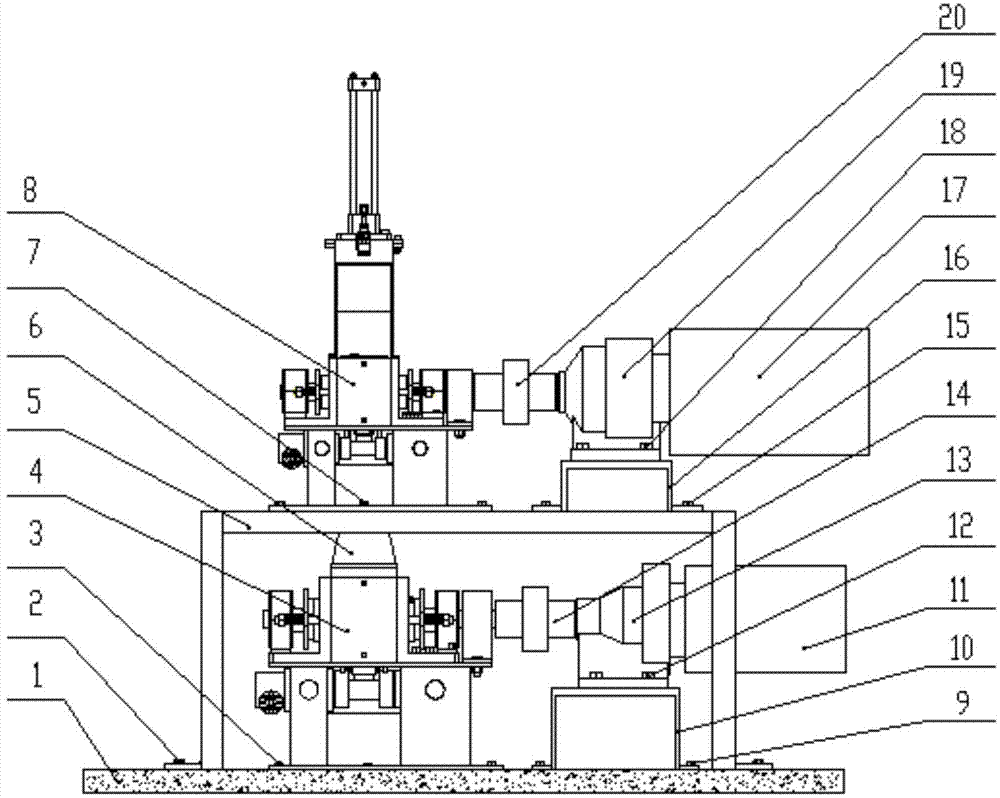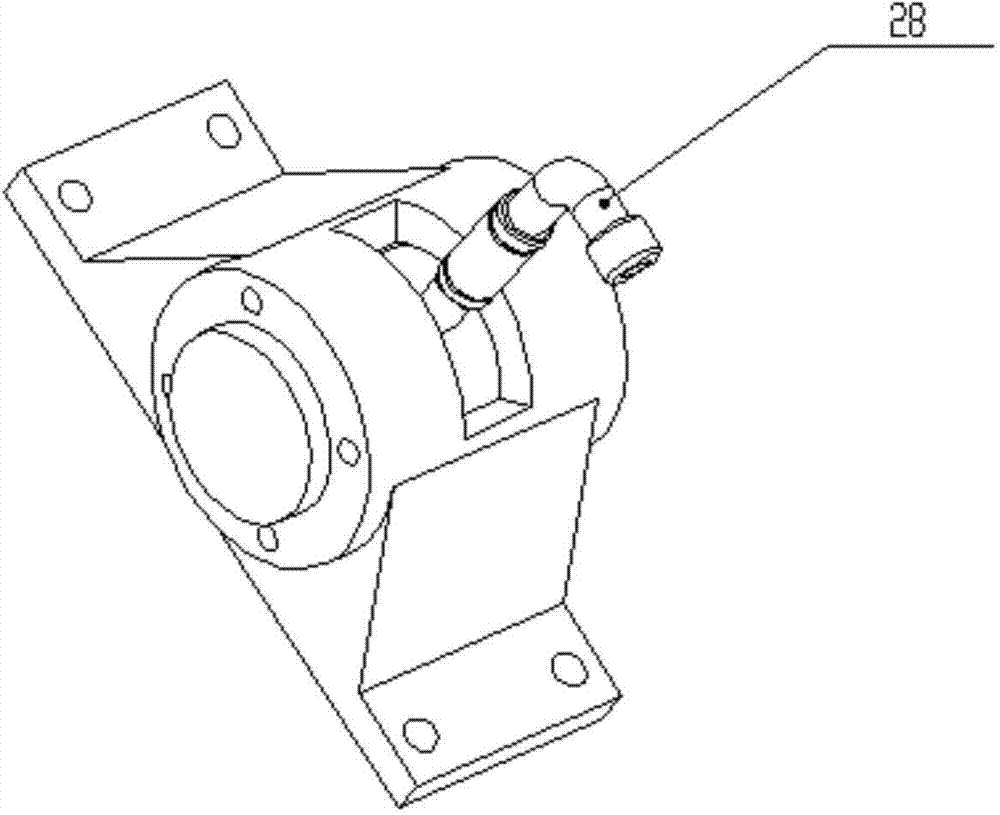Rotor combined mixer
A combined type and rotor technology, which is applied in the field of rubber mixing, can solve the problems of uneven proportioning of small materials, increase of silica network structure, uneven proportioning, etc., so as to enhance the secondary strong dispersion effect and increase the effective The temperature control area and the effect of high shear efficiency
- Summary
- Abstract
- Description
- Claims
- Application Information
AI Technical Summary
Problems solved by technology
Method used
Image
Examples
Embodiment 1
[0017] The main structure of the combined mixing device involved in this embodiment includes a base 1, a first bolt 2, a fourth bolt 3, a downstream mixer 4, a first bracket 5, a connecting device 6, a fifth bolt 7, an upstream mixer 8. The second bolt 9, the second bracket 10, the downstream motor 11, the seventh bolt 12, the downstream reduction box 13, the downstream coupling 14, the third bolt 15, the third bracket 16, the upstream motor 17, the sixth bolt 18 , the upstream reduction box 19, the upstream coupling 20, the reaction square rotor 21 and the meshing rotor 22, the overall device is composed of the upstream internal mixer 8 and the downstream internal mixer 4 connected by the connecting device 6, and the downstream internal mixer 4 The bottom end is fixed on the base 1 by the fourth bolt 3, the downstream motor 11 is connected with the reaction square rotor 21 in the downstream internal mixer 4 through the downstream reduction box 13 and the downstream coupling 14...
PUM
 Login to View More
Login to View More Abstract
Description
Claims
Application Information
 Login to View More
Login to View More - R&D
- Intellectual Property
- Life Sciences
- Materials
- Tech Scout
- Unparalleled Data Quality
- Higher Quality Content
- 60% Fewer Hallucinations
Browse by: Latest US Patents, China's latest patents, Technical Efficacy Thesaurus, Application Domain, Technology Topic, Popular Technical Reports.
© 2025 PatSnap. All rights reserved.Legal|Privacy policy|Modern Slavery Act Transparency Statement|Sitemap|About US| Contact US: help@patsnap.com



